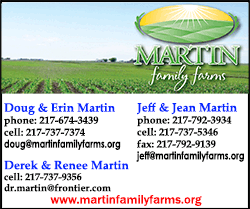|
 Family
Gardening Provides More Than a Bountiful Harvest Family
Gardening Provides More Than a Bountiful Harvest
By Melinda Myers
 Send a link to a friend
Send a link to a friend
[April 06, 2017]
Gardeners
know digging, planting, harvesting and even viewing a garden is good
for the mind, body and spirit. It improves strength and flexibility,
lowers blood pressure and elevates our mood. And this is true for
all members of the family from the very young to the more seasoned.
|
|
 Plan on sharing these benefits with yours or a friend’s children,
grandchildren, nieces and nephews this growing season. Children, and
even adults, who grow their own vegetables are more likely to eat
them. But gardening does even more to help our children. Research
shows children exposed to the outdoors and gardening are more
focused, have less issues with attention deficit and score better on
tests. Girls exposed to gardens and green spaces are more confident
and better able to handle peer pressure. Plan on sharing these benefits with yours or a friend’s children,
grandchildren, nieces and nephews this growing season. Children, and
even adults, who grow their own vegetables are more likely to eat
them. But gardening does even more to help our children. Research
shows children exposed to the outdoors and gardening are more
focused, have less issues with attention deficit and score better on
tests. Girls exposed to gardens and green spaces are more confident
and better able to handle peer pressure.
Here are a few ways to make gardening with family more fun and
memorable.
Involve the whole family when planning the garden. Talk about the
flowers everyone wants to grow and vegetables you all like to eat.
Then break out the paper, old catalogs, scissors, crayons, pencils
and rulers. Young children can cut out pictures of their favorite
vegetables and flowers and glue them on the paper. Older children
can draw the garden to scale on graph paper and plot their choices
in the garden.
 Make your own plant markers. Once you decide on the plants you want
to grow spend a rainy afternoon creating plant labels for the
garden. Paint the name or a picture of the flower or vegetable on a
flat rock, slat from a discarded mini blind, paint sticks or other
recycled items.
Consider giving everyone his or her own garden space. Let them pick
their own plants and be responsible for its maintenance. Design
individual plots or divide larger beds into smaller sections. Or
give each family member his or her own container. This is a great
option when planting space and time are limited. And just about
anything can be planted. An old 5-gallon bucket or washtub with
holes drilled into the bottom, recycled nursery pots or a colorful
raised planter make great gardens.
Direct fast moving, small feet down the path and away from plants.
Fun edging materials, mulched pathways or slightly raised beds help
delineate pathways from gardens. This helps to keep children from
trampling the plants.
[to top of second column] |

Grow some quick-maturing plants like radishes and lettuce that are
ready to harvest in 30 to 45 days along with slower growers like
watermelon and tomatoes. You will keep everyone interested if there
is something growing, blooming and good to eat throughout the
season.
Reduce the risk of mistakes. Kids, like so many gardeners, suffer
from “more is better” syndrome. Avoid damage from overfertilization
by using a low nitrogen organic fertilizer like Milorganite (milorganite.com).
It’s safe and won’t burn your plants even if the weather becomes hot
and dry.
And enlist my favorite “Pluck, drop and stomp” pest management
strategy. Teach children the difference between the good and bad
insects and then have them burn off some excess energy as they
implement the process.
End the season with a harvest party. Use your homegrown produce to
prepare a picnic or fancy dinner for family and friends. And be sure
to use some of those beautiful flowers you grew to decorate the
table.
-----
Gardening expert Melinda Myers is the
author or more than 20 gardening books, including Small Space
Gardening and the Midwest Gardener’s Handbook. She hosts The Great
Courses “How to Grow Anything: Food Gardening For Everyone” DVD set
and the nationally-syndicated Melinda’s Garden Moment TV & radio
program. Myers is a columnist and contributing editor for Birds &
Blooms magazine and spokesperson for Milorganite. Her website is
www.melindamyers.com.
 |